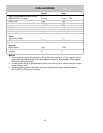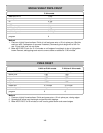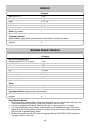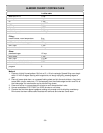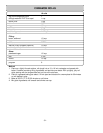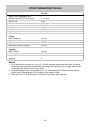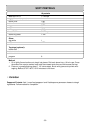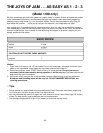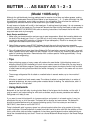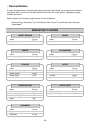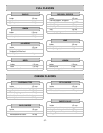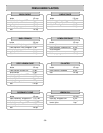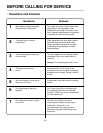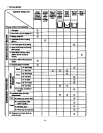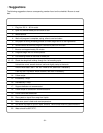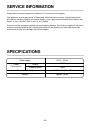
- 55 -
BUTTER . . . AS EASY AS 1 - 2 - 3
(Model 1189S only)
Although the old-fashioned churning method used to require a lot of time and elbow grease, making
butter in your Toastmaster Bread & Butter Maker is now as easy as 1 - 2 - 3. make the butter first, add
the additional ingr e d i e n t s, cover tightly and store in the refri g e ra t o r.This will allow the additional
i n gr e d i e n t s to enhance the flavor of the butter while your bread is baking.
A small amount of butter will be left in the bread pan. If making bread right away, it is not necessary to
wash the interior of the bread pan.The bread will absorb the butter during the knead or bake process.
DO NOT IMMERSE THE BREAD PAN; refer to cleaning instructions. Hand wash the lid with mild
soap and water and dry thoroughly.
Basic Recipe and Method
1. Make sure your bread machine and pan are at room temperature. Attach the kneading blade onto
the shaft of the bread pan. Pour in 1 cup (236 ml) of cold, heavy whipping cream or heavy cream
(containing at least 36% butterfat or 5 grams of fat per tablespoon). Place lid on bread pan. Insert
bread pan into bread machine and close lid.
2. Select Butter program, press START. Halfway through the cycle, the mixture may resemble
whipped cream and then begin to separa t e.The bread machine will beep when the cycle is complete.
3. Pour off buttermilk and save (see Using Buttermilk). To rinse butter, remove lid and add 1 cup cold
water, replace lid and drain water into sink. Repeat.This will rinse off any remaining buttermilk and
assist in hardening the butter. Remove butter with a rubber spatula.Yields approximately 1/2 cup.
Flavor before refrigerating.
Ⅲ Tips
• Heavy whipping cream or heavy cream will produce the most butter. Light whipping cream and
whipping cream (30-36% butterfat) will churn into a smaller amount of butter and you may have to
repeat part of the Butter program. Stop the program when butter chunks are formed. Half and Half
or other lower-fat dairy products without the words “whipping” or “cream” in the name will not churn
into butter.
• The average refrigerated life of salted or unsalted butter is several weeks; up to nine months if
frozen.
• All butter is made from fresh sweet cream.The choice of salted or unsalted butter is a matter of
personal preference, but many cooks prefer unsalted butter for baking. For salted butter, add 1/4
teaspoon salt to 1/2 cup butter.
Ⅲ Using Buttermilk
Buttermilk is the liquid left after churning butter. Most of the fat goes into the butter, not the milk. It
may be used in any recipe calling for milk such as shakes, soups, sauces, pancakes and waffles.
Refrigerate until ready to use.
If you want to use this bu t t e rmilk to increase calcium and protein in a bread recipe, it may be
s u b s t i t u t e d for any or all of the water. The bread will be shorter and more dense. The buttermilk
should be scalded before using to improve its baking quality. Pour into sauce pan and heat to
200°F/94°C, then allow to cool to 80°F/27°C.
Today’s buttermilk sold in grocery stores is a cultured product rather than a by-product of churning
cream into butter. Cultured buttermilk is made from fresh low fat or skim milk with the addition of non-
fat d ry milk solids, salts and other ingr e d i e n t s. It also has a special bacterial culture added which pro-
d u c e s the characteristically tart flavor. There is a cultured Buttermilk Bread recipe in the Bread Recipe
section.



